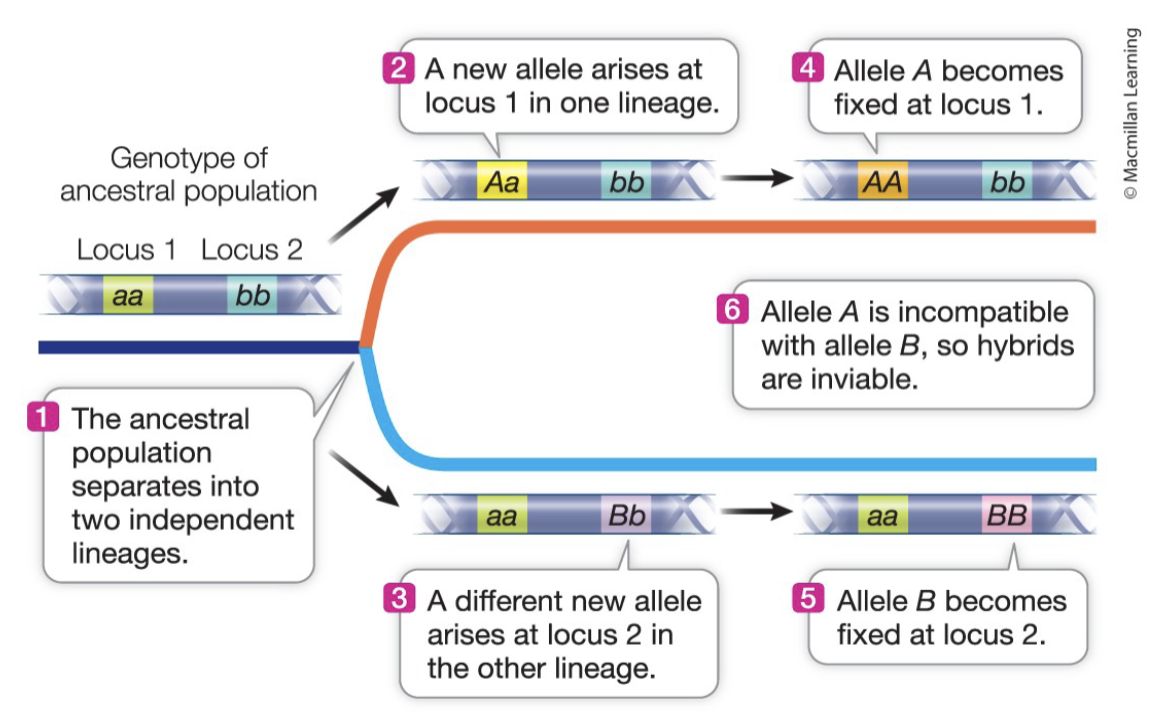Macroevolution I: Origin of Species
1/14
There's no tags or description
Looks like no tags are added yet.
Name | Mastery | Learn | Test | Matching | Spaced |
|---|
No study sessions yet.
15 Terms
microevolution
change in the frequencies of genotypes in a population —> leads to the formation of species
species
a group of actually or potentially interbreeding natural populations that are reproductively isolated from other such groups
this is the biological species concept
problems with the biological species concept
does not apply to asexual organisms
can not be applied to fossils
“potentially interbreeding” is ill-defined, particularly in the case of hybrids
reproductive barriers between species (prezygotic vs. postzygotic)
prezygotic barriers: barriers that prevent fertilization
postzygotic barriers: barriers that operate after fertilization occurs
prezygotic barriers
barriers that prevent fertilization
habitat isolation
temporal isolation
behavioral isolation
mechanical isolation
gametic isolation
postzygotic barriers
barriers that operate after fertilization occurs
reduced hybrid survivorship
reduced hybrid fertility
allopatric speciation
geographic barriers divides population
gene flow is cut off
microevolution takes over
populations differentiate
most prevalent form of speciation
sympatric speciation
species arise from a connected population
common in plants, occasional in animals
generally two types: polyploidy, and behavioral change
sympatric speciation by polyploidy (plants)
mistake during cell division
new individual is viable but genetically isolated
in plants, individual with new ploidy-level can often self-fertilize
sympatric speciation by behavioral change (animals)
parents separate into new subpopulations in same region
young return to new place to mate
no gene flow with original population
autopolyploidy
chromosome duplication in a single species
allopolyploidy
combining chromosomes of two different species
the dobzhansky-muller model
explains how species become reproductively isolated
a subdivided population evolves independently
in each lineage, new alleles become fixed at different loci, but they are incompatible

adaptive radiation
relatively rapid evolution of many new, diverse species from a common ancestor under new environmental conditions
coevolution
mutual evolutionary influence between two species occurring in the same environment
red queen hypothesis: hypothesis that species must constantly adapt, evolve, and proliferate in order to survive while pitted against ever-evolving opposing species.